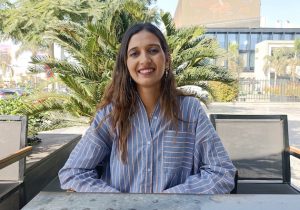TEL AVIV, Israel, Oct. 27, 2022 (GLOBE NEWSWIRE) — Legit Security, a cyber security company with an enterprise platform to secure an organization's software supply chain, today announced it has been named a winner of the Top InfoSec Innovator Awards for 2022. Legit Security competed against many of the industry's leading providers of cybersecurity products and services to win this prestigious award. Judges looked at thousands of information security companies to search for those with the most innovative solutions to some of the most challenging cybersecurity issues facing the marketplace today.
"We are thrilled to be recognized as a Top InfoSec Innovator in the market," said Roni Fuchs, CEO of Legit Security. "We are solving one of the biggest challenges in cyber security today, which is helping organizations secure their software supply chains from attack while enabling Application Security teams to greatly improve efficiency, minimize their security workload, and prevent threats from reaching production environments. We're proud of the innovation behind our and grateful for the many enterprise customers that have rapidly adopted it."
"We're pleased to name Legit Security as a winner among a small and elite group of cybersecurity innovators for 2022," said Gary Miliefsky, Chairman and CEO of Cyber Defense Media Group.
Legit Security
Legit Security protects software supply chains from attack by automatically discovering and securing the pipelines, infrastructure, code and people so that businesses can stay safe while releasing software fast. Legit Security provides an easy–to–implement SaaS platform that supports both cloud and on–premises resources and combines automated discovery and analysis capabilities with hundreds of security policies developed by industry experts with real–world SDLC security experience. This integrated platform keeps your software factory secure and ensures that your applications are released without vulnerabilities.
About Cyber Defense Awards
This is Cyber Defense Magazine's 10th year honoring cybersecurity innovators, including the Top InfoSec Innovators for 2022. Judges for these prestigious awards include cybersecurity industry veterans and trailblazers Gary Miliefsky of CDMG, Robert R. Ackerman Jr. of Allegis Cyber, Dino Boukouris of MomentumCyber, Robert Herjavec of Herjavec Group, Dr. Peter Stephenson of CDMG and David DeWalt of NightDragon. Cyber Defense Magazine was founded in 2012 with the mission to share cutting–edge knowledge, real–world stories and awards on the best ideas, products and services in the information security industry. Learn more at http://www.cyberdefensemagazine.com.

GLOBENEWSWIRE (Distribution ID 8683904)





